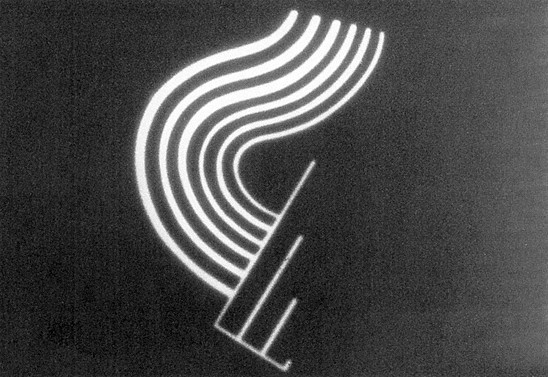Dance Machines - From Léger to Kraftwerk
22 Jan - 27 Apr 2014
DANCE MACHINES - FROM LÉGER TO KRAFTWERK
22 January - 27 April 2014
Curator: Jo Widoff
Dance Machines – From Léger to Kraftwerk focuses on the fascination with machines, industry and everyday mechanisation. One gallery is devoted to Kraftwerk’s 3-D installation 1 2 3 4 5 6 7 8 (2013).
The first Futurist Manifesto was published in the French daily paper Le Figaro on 20 February, 1909. It was written by the Italian poet and futurist leader Filippo Tommaso Marinetti, and proposed a radical machine aesthetic that would do away with all antique sculpture and eradicate obsolete painting. The futurists worshipped the machines of the emerging industrial era, and initially glorified war and violence. The enthusiasm waned after the First World War, however, but the aesthetic program lived on among the avant-garde in Paris, New York, Prague, Dessau and Moscow.
In the early 20th century, art began to portray the new experiences that came with life in the city. The metropolis itself became a modern subject, as in Aleksandra Ekster’s fragmented landscape Venezia (1915), which conveys the beauty of the city’s contrasts and reflections. The mechanical mass medium of film, along with modern dance and theatre, grew into prominent art forms for portraying the revolutionary energy of the era. The stage was a laboratory where wild ideas could be enacted on a grand scale and in combination with the other arts.
Fernand Léger and many of his contemporaries strove to apply industrial principles of order, rhythm and efficiency in their painting, and also implemented machine aesthetics in their work. For dadaists such as Francis Picabia and Marcel Duchamp, however, the machine symbolised irrationality. Gradually, industrial rationalism and experiences from the war gave rise to notions of the body as a soulless engine, and artists began portraying machine-like bodies. Mechanical ballets were produced, where dancers performed in cumbersome, stylised costumes. Later on, Charlie Chaplin parodied the machine man in Modern Times (1936), criticising the accelerating pace of the assembly line production introduced by Henry Ford in his factories.
Jo Widoff, curator, comments on Kraftwerk’s impact on the exhibition:
“For more than four decades now, Kraftwerk have explored the relationship between man and machine. In the museum galleries, Kraftwerk’s 3-D installation will initiate an electronic and conceptual dialogue with early modernism, something I am certainly looking forward to.”
Commenting on the relationship between man and machine, Kraftwerk’s Ralf Hütter has said:
“It feels good to be part of the machine. It is a liberating feeling. For one thing because I, as an individual, take a back seat. We play the machines, and the machines play us.”
In cooperation with Dansmuseet - Museum Rolf de Maré Stockholm
22 January - 27 April 2014
Curator: Jo Widoff
Dance Machines – From Léger to Kraftwerk focuses on the fascination with machines, industry and everyday mechanisation. One gallery is devoted to Kraftwerk’s 3-D installation 1 2 3 4 5 6 7 8 (2013).
The first Futurist Manifesto was published in the French daily paper Le Figaro on 20 February, 1909. It was written by the Italian poet and futurist leader Filippo Tommaso Marinetti, and proposed a radical machine aesthetic that would do away with all antique sculpture and eradicate obsolete painting. The futurists worshipped the machines of the emerging industrial era, and initially glorified war and violence. The enthusiasm waned after the First World War, however, but the aesthetic program lived on among the avant-garde in Paris, New York, Prague, Dessau and Moscow.
In the early 20th century, art began to portray the new experiences that came with life in the city. The metropolis itself became a modern subject, as in Aleksandra Ekster’s fragmented landscape Venezia (1915), which conveys the beauty of the city’s contrasts and reflections. The mechanical mass medium of film, along with modern dance and theatre, grew into prominent art forms for portraying the revolutionary energy of the era. The stage was a laboratory where wild ideas could be enacted on a grand scale and in combination with the other arts.
Fernand Léger and many of his contemporaries strove to apply industrial principles of order, rhythm and efficiency in their painting, and also implemented machine aesthetics in their work. For dadaists such as Francis Picabia and Marcel Duchamp, however, the machine symbolised irrationality. Gradually, industrial rationalism and experiences from the war gave rise to notions of the body as a soulless engine, and artists began portraying machine-like bodies. Mechanical ballets were produced, where dancers performed in cumbersome, stylised costumes. Later on, Charlie Chaplin parodied the machine man in Modern Times (1936), criticising the accelerating pace of the assembly line production introduced by Henry Ford in his factories.
Jo Widoff, curator, comments on Kraftwerk’s impact on the exhibition:
“For more than four decades now, Kraftwerk have explored the relationship between man and machine. In the museum galleries, Kraftwerk’s 3-D installation will initiate an electronic and conceptual dialogue with early modernism, something I am certainly looking forward to.”
Commenting on the relationship between man and machine, Kraftwerk’s Ralf Hütter has said:
“It feels good to be part of the machine. It is a liberating feeling. For one thing because I, as an individual, take a back seat. We play the machines, and the machines play us.”
In cooperation with Dansmuseet - Museum Rolf de Maré Stockholm

